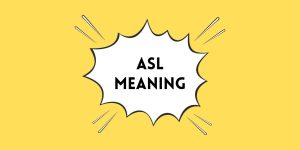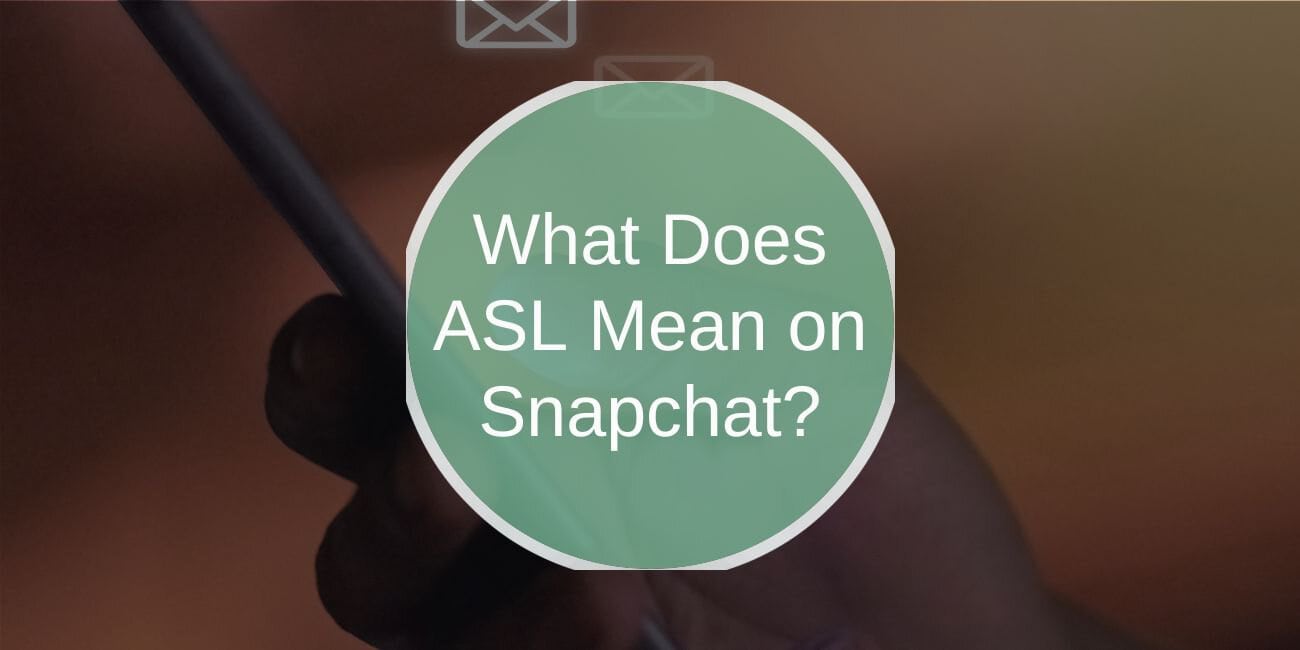In the vibrant world of social media, abbreviations and slang have become integral to online communication. Snapchat, a platform known for its ephemeral messaging and creative content sharing, is no exception. One abbreviation that frequently pops up in conversations on Snapchat is ASL. So, what does ASL mean on Snapchat, and how is it used? Let’s dive into the details.
What Does ASL Stand For?

ASL is an acronym that stands for Age, Sex, Location. It’s a shorthand way for users to ask for or provide basic personal information in a conversation. Each component of ASL serves a specific purpose:
- Age: This refers to how old someone is. Sharing your age can help establish common ground or gauge maturity levels in conversations.
- Sex: This denotes the gender of the person. It can be used to clarify identity and can be an important aspect of online interactions, especially in dating contexts.
- Location: This indicates where someone is located, which can be relevant for planning meet-ups or understanding local context.
How ASL Is Used in Snapchat Conversations
ASL is typically used in informal chats, especially when users are getting to know each other. For instance, if someone initiates a conversation with a new friend on Snapchat, they might ask, “What’s your ASL?” This straightforward question allows both parties to share basic information quickly.
Younger users, particularly those in their teens and early twenties, often utilize ASL to establish context, whether they are forming friendships or seeking romantic connections.
The Importance of Context When Using ASL
The meaning of ASL can vary significantly depending on the context in which it’s used. In casual conversations, it’s generally harmless, serving as a simple icebreaker. However, users should consider privacy when sharing personal details like age, sex, and location.
For example, someone might feel comfortable sharing their age and sex but might be hesitant to disclose their location, especially if they’re talking to someone they don’t know well. It’s essential to navigate these conversations with an understanding of personal boundaries and comfort levels.
Alternatives to ASL in Online Conversations
While ASL is widely recognized, other abbreviations serve similar purposes or may emerge in different contexts. Some alternatives include:
- A/S/L: Another variation of ASL, often used in similar contexts.
- DM: Short for “direct message,” which is often used when suggesting private conversations.
- TMI: Standing for “too much information,” which can be a playful response to overly personal inquiries.
As language and slang continue to evolve, it’s important to stay aware of new terms and expressions that may arise within the Snapchat community.
Common Misunderstandings About ASL
There are some misconceptions surrounding the use of ASL in conversations. For instance, some people might think that asking for someone’s ASL is intrusive. While it can be perceived as such, the context and manner in which it’s asked play a significant role in how it is received.
It’s vital to encourage respectful communication practices, emphasizing that sharing personal information should always be consensual and comfortable for both parties involved.
How to Respond to ASL in Conversations
When someone asks for your ASL, consider your comfort level before responding. Here are some tips for handling such inquiries:
- Be Honest: If you’re comfortable sharing your age, sex, and location, feel free to provide the information.
- Set Boundaries: If you don’t want to share certain details, it’s okay to politely decline. You might respond with, “I prefer not to share my location,” or simply say, “I’d rather keep some details private.”
- Reciprocate: If you feel comfortable, you can ask for their ASL in return, fostering a balanced exchange.
Conclusion
Understanding what ASL means on Snapchat helps users navigate conversations more effectively. This simple abbreviation—standing for Age, Sex, Location—serves as a quick way to share essential information in informal settings. As with all forms of communication, it’s important to use ASL thoughtfully and responsibly.
Feel free to share your experiences or questions about ASL or other Snapchat abbreviations in the comments below! Your insights can help others better navigate their digital communication.

